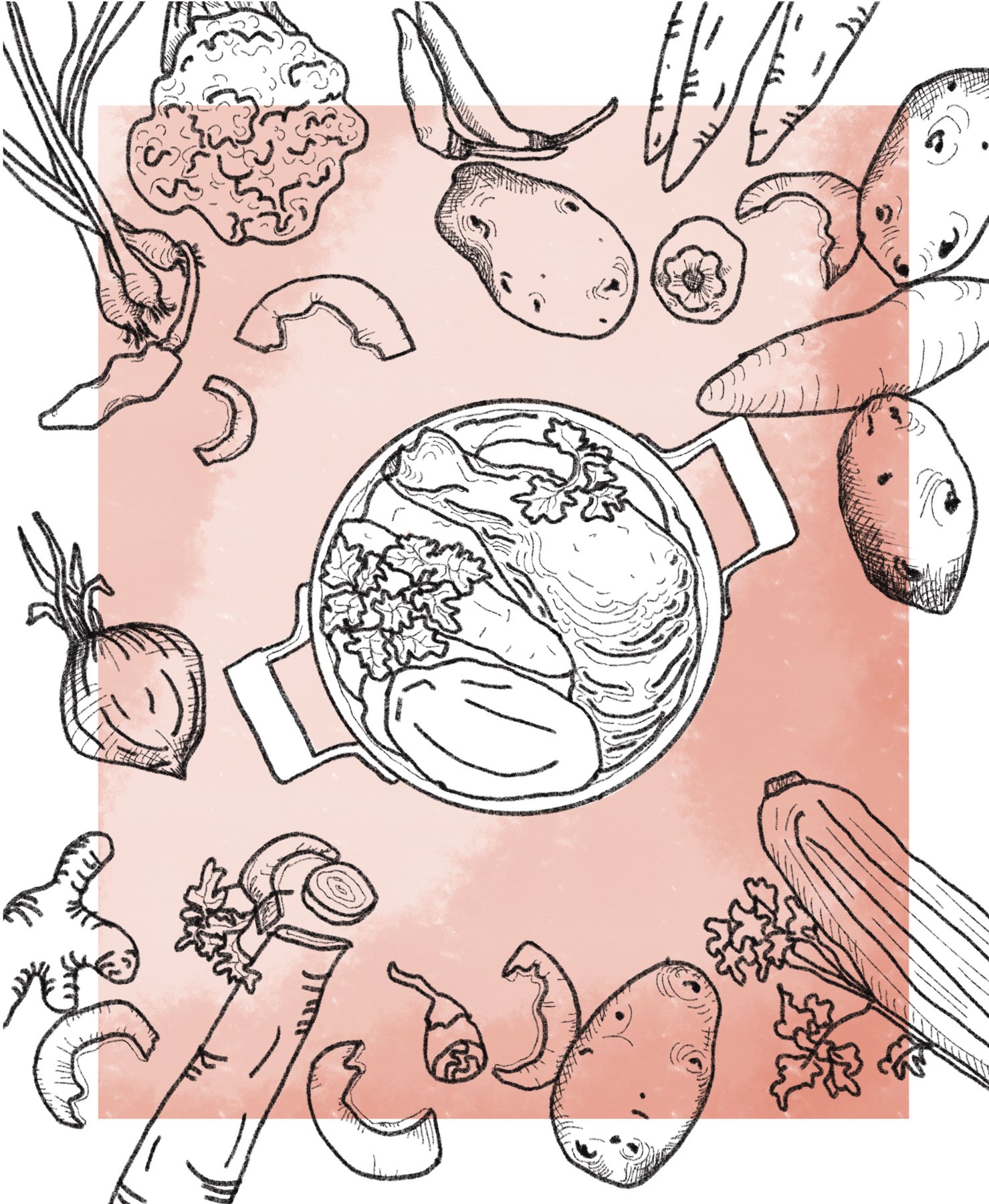
The Continuous Kitchen
Most of us know by now that plastic is threatening our planet. Up until 2017, we engaged in a routine of “wish-cycling” in which we dutifully tossed our non-food waste into single-stream recycling bins. It was an auto-response, a supposedly guilt-free way to indulge in our mania for uncontrolled consumption. Most of our trash was exported to China where, we imagined, it was turned into colorful fleece clothing. The former is no longer viable, and the latter wasn’t ever true. Once in China, almost all of our trash went into Chinese landfills; understandably, the Chinese tired of this scheme and changed the rules. Meanwhile, due to lack of need, our recycling facilities fell way behind global standards. We lagged far behind countries like Denmark, where 79 percent of waste is incinerated for heating and energy, or recycled. In the U.S., less than 10 percent of our plastic is recycled.
Our kitchens are often the worst offenders for single-use plastics and other categories of waste. It may seem like an insurmountable problem, that there’s nothing you as an individual can do to help. Just remember: Every little bit helps!
Here are a few ways you can use less plastic in your kitchen.
Just cook. Here’s a concept: Make your own food from scratch. This is how your grandparents did it (okay, probably mostly your grandmother). Imagine the amount of plastic and paper involved in one single take-out order. If you can’t stomach the specter of doing without your favorite Mexican or Chinese food, there’s some good news: On July 19 California Governor Gavin Newsom signed into law Assembly Bill 619, making it possible for customers to take their own containers to restaurants for leftovers and take-out. The final decision is up to individual restaurants; use the power of your dollar and your voice to encourage eateries to accept your containers, eschew plastic cutlery and/or use uncoated paper containers. Styrofoam is officially banned in SLO County as of April 9. Note: We are way behind other California counties in taking this important, but obvious, step. If you see Styrofoam, make a fuss!
Once you get in the habit of reducing food waste, you can make tasty and nutritious broths from trimmings, bones and shells; just save food and protein scraps in a tub in the freezer until you have enough. Vegetable broths and meat or bone broths have been made in restaurant kitchens for many generations because it makes sense from a conservation viewpoint. Now add the environmental impact. In these uncertain times, a simple soup can make the difference between dark days and light.
Use what you have. Interview your fridge before you go to the store to buy more; cycle through the goodies in the order they came into your kitchen; plan menus based on what you already have, not on what titillates you on Instagram. This can lead to an increase in creativity in your kitchen; I know it does for me. Chicken, rice, lemon and celery soup, anyone?
Evaluate food storage options. Re-useable, washable silicone bags replace plastic; beeswax-coated wraps replace plastic wrap; glass containers with locking lids can be used. (Thin plastic wrap is currently UN-recyclable in SLO County.)
Source food and prep. Carry re-useable mesh bags for produce; buy protein from non-supermarket sources, where it is NOT packaged in polystyrene and plastic film; collect all your plastic film packaging; wash, dry and drop at a collection point such as Kohl’s.
Utilize food waste. Some trimmings, peels and pits really can’t be repurposed (for example, we’re in California — we eat a lot of avocados. Not much you can do with avocado skins, and there’s a limit to how many avocado-pit trees you can start on your counter). Collect all unusable food waste, including protein, in a composting-type countertop bin, and either compost it yourself or add to the green curbside bin the night before pickup (see box). Did you know that human and pet hair, cotton lint from the dryer, and floor sweepings can all go into the compost?
Clean. Choose among the sustainable sources for cleaning products in refillable bottles, and if you choose tablets for refilling rather than liquids, your carbon footprint drops big-time since you no longer support the shipping of water-based cleaners. Make your own cleaning mixtures with vinegar or castile soap; the Internet is full of recipes!
Once you start thinking about the “continuous kitchen,” you can find exciting ways to use and re-use products and foodstuffs you’ve always thrown in the garbage (aka landfill). Instead of moldering and off-gassing in landfills, your food waste will turn to rich and nutritious compost, and nurture healthy plants and landscapes. I haven’t used my garbage disposal in months.
Who’d of thunk it: Our manifest destiny as Americans may just lie in the old practices and norms of our grandparents’ day. This is the time for a seismic cultural shift, in much the same way that smoking cigarettes gradually became so much less acceptable. Be the change.
* * *
In association with Savethefood.com, garbage service providers in SLO County have been offering a food waste collection program for many months. Sadly, almost no one seems to know about it. In a world of good intentions, the roll-out of this program was weirdly underplayed — no fliers or email alerts to customers, no CSAs. But they will give you a free little countertop collection bin that I guarantee does not smell (assuming you empty it into your green curbside bin every few days, of course). Be sure to watch the YouTube video, “The Extraordinary Life and Times of Strawberry”; it may just make you cry. But I’m okay with that, if it means you strive to cut down on your food waste.

